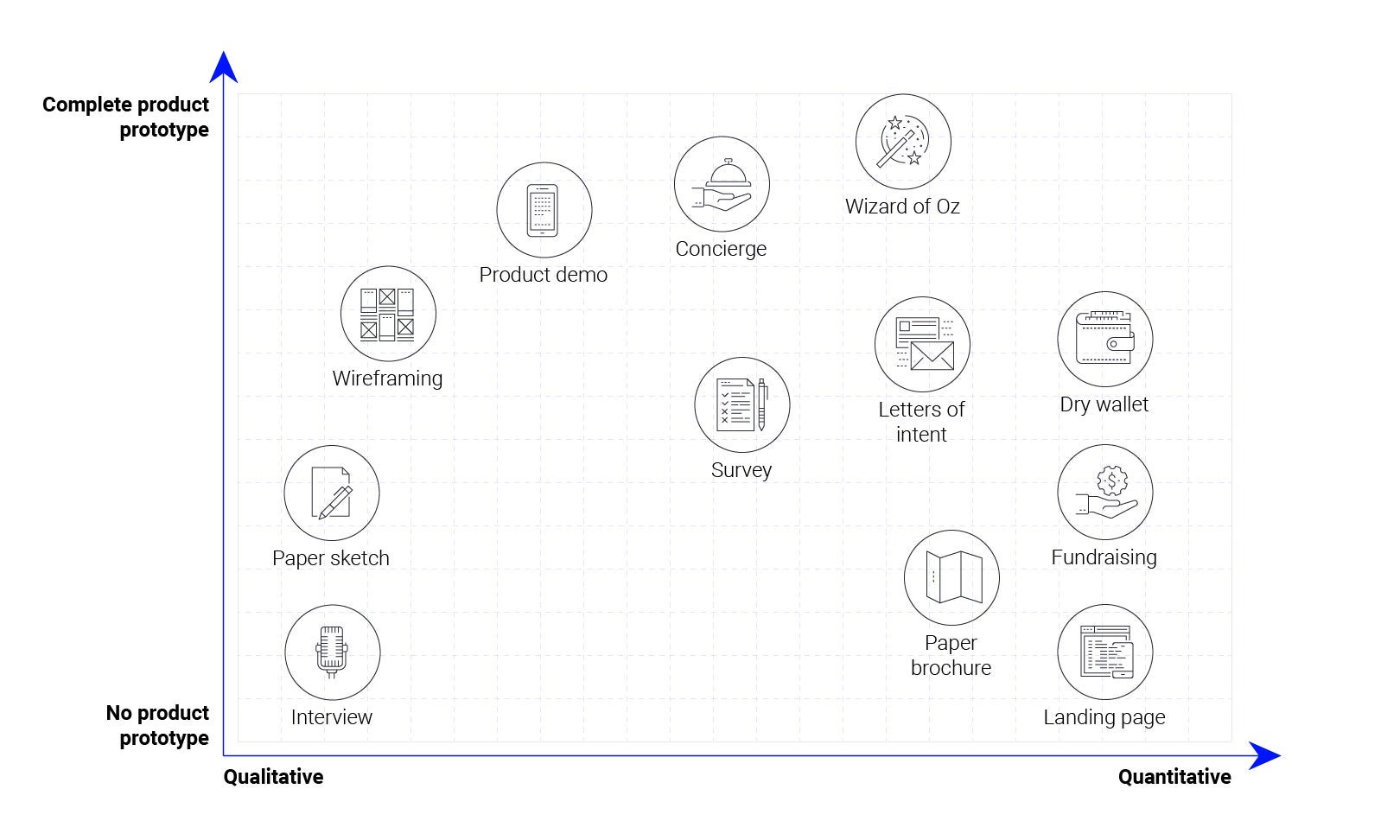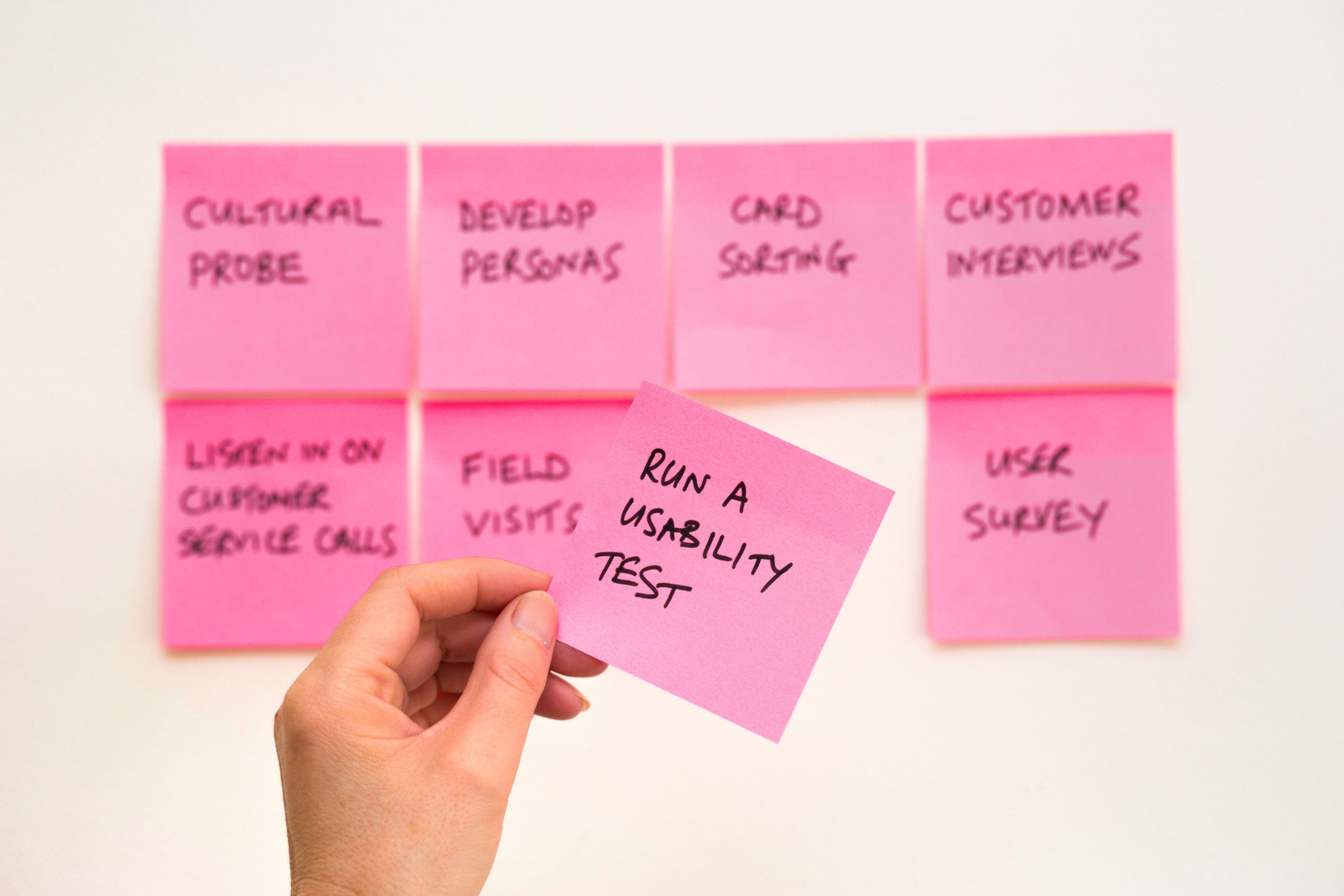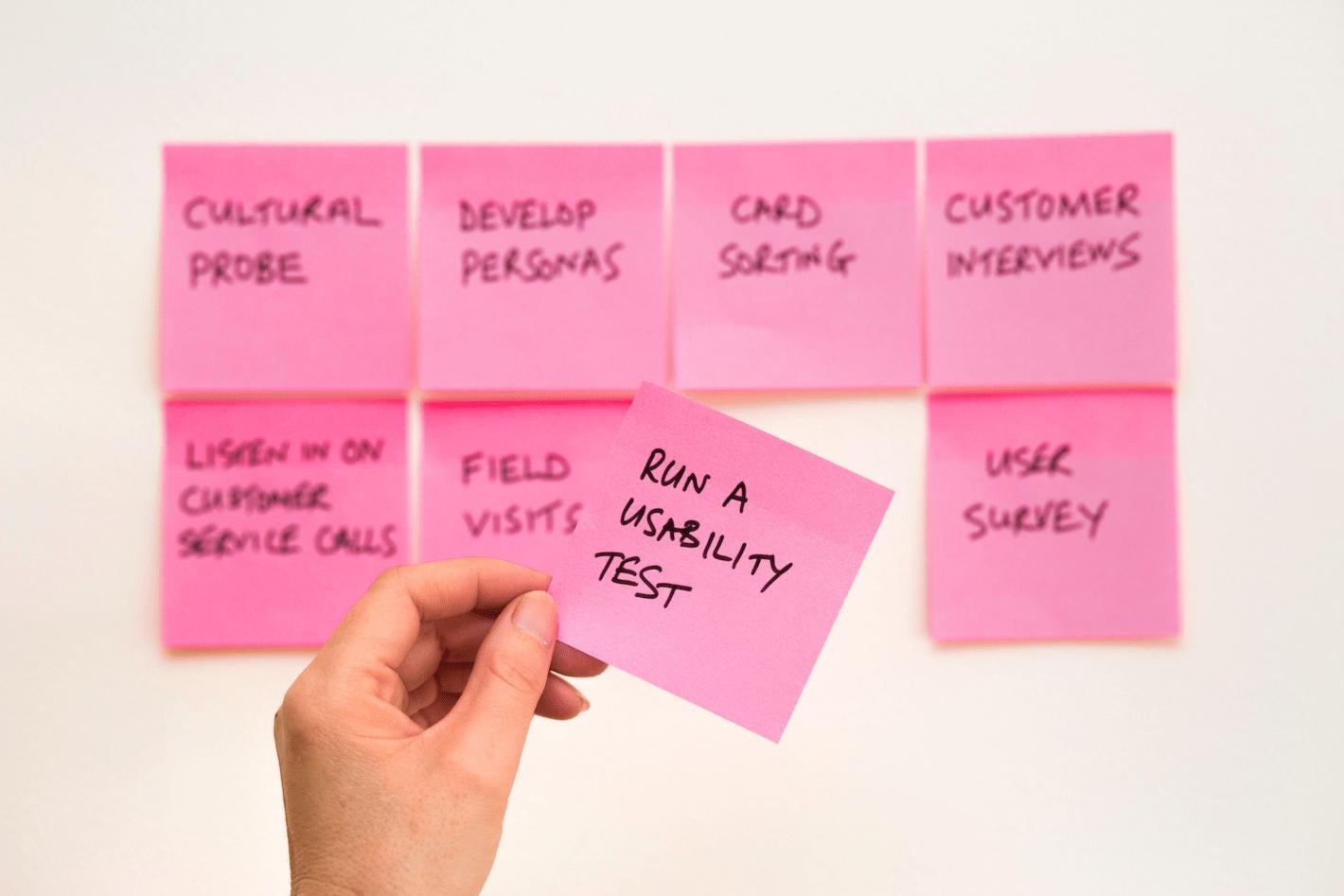So, you have an idea for your product, and you’d like to jump straight to design and development, right? This is understandable – you're sure about the business potential of your idea, you’ve done your research, so why wait?
There is, however, one more step to take. Implementing the experiment attitude before designing the User Experience (UX) and the actual interface (UI) helps you get more information about your potential customers and how to address their real-life challenges with your business.
To do so, in this post, I’ll tell you about User Centred Design and the difference between idea-driven and experiment attitude.
1. Idea-driven attitude vs User Centred Design
Idea-driven attitude
The first approach I’d like to discuss – and unfortunately most common – is the idea-driven design and development.
It’s quite straightforward: you have an idea, you’re certain about what you want to build (e.g., a web app or a mobile app), and you assume you know how your target audience will interact with the final product.
As this approach may sometimes work, it’s a big gamble, increasing risk related to developing a product.
Experiment attitude
The approach reducing the guesswork from planning and implementing your product is the experiment attitude. It means that before taking any action, you decide to test and validate your assumptions, putting users first.
In this approach, your idea is no longer about your feelings, as it is more about your users' needs.
Why is it the experiment attitude? Because to test your hypothesis, you need to run experiments, carry out desk research, check different business cases and even create prototypes and test them with potential customers.
2. Business model as a set of assumptions
Entire business model assessment can be divided into three parts:
- Viability – answering the business-oriented questions like how will your business make a profit, what is the business model, how much should you charge? You can answer these questions doing desk research connected with business case calculations.
- Desirability – finding answers about how the product is related to customer needs, fears, or preferences. In other words: how attractive or helpful is the product to your potential customers. At this stage, we can apply a series of qualitative and quantitative user research techniques.
- Feasibility – looking for technical solutions that will make product development possible and getting an estimate for the development. Both can be provided by IT analysts from a software development company.
What’s important for the success of the business model valuation is the right attitude. You need to assume that your knowledge is close to nothing, focusing on the outcome of the research process. If you have any assumptions about your product or user base already, translate them into a hypothesis and test them.
Potential assumptions based on the example of Airbnb could look as follows:
- People would like to rent their private houses to strangers.
- It is possible for guests to feel comfortable in the house of a stranger.
- Hosts will show photos of their private rooms.
- Our proposition of the fee would be acceptable for the users.
- Guests would believe that online reservation of someone’s private room is not a fraud.
- Users would be willing to write online reviews.
Another advantage of this approach – besides confirmed information gathering for product development – is gaining knowledge about your target group. You can use it to form a new hypothesis and use it to scale your product in the future, adding new features based on this initial research.
3. Prioritise research process
By having all the feedback from the research process, it may become difficult to plan the work. What helps, is prioritisation of the information you gathered. One of the examples of how to do this is rating the feedback based on the impact it may have on your business.
You can update your priorities as you learn new things about your customers. The point is to have the feedback organised, so it’s easier to structure the scope of the project.
4. Test your assumptions
Ok, so which methodologies are the best choice to test your assumptions?
If you’re starting, it’s best to focus on qualitative research to gather more insights. Based on the feedback you get at this stage, you can update your hypotheses to match your current state of knowledge.
Next, you can use quantitative tests to verify your project idea. For example, you can test how many people identify with your target audience’s assumed problems. Or what market is best for your product.

Having the insight gathered during research, you can start building your product based on validated assumptions. So, as you can see, you don’t have to wait until the end of the validating process to start with product development. That’s why prioritisation is so important.
Summing up
Planning, designing, and developing a product, focus on validating your ideas first. As it may be tempting to follow a gut feeling – especially, when you’re certain about your assumptions – feedback from your actual target audience can really make a difference.
Remember that you don’t have to spend much on testing and that with good prioritisation you can start developing a product, while some tests are still being conducted.
Plus, if you want to impress investors or stakeholders, data gathered during the research process will do great.
Looking for help with testing your idea? We know a thing or two about User Experience research. Let's talk!





